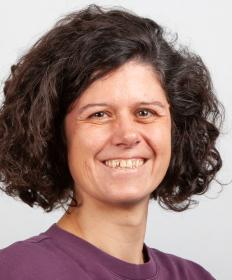Want to share your screen? See the person you're talking to? Contact us via digital library desk! We will be with you shortly.
Monday-Friday


Want to share your screen? See the person you're talking to? Contact us via digital library desk! We will be with you shortly.
Monday-Friday


To re-use copyrighted content in own work, you will need to acquire permission from the copyright holder. Here we show how to avoid charges and potential pitfalls for re-using content.
To re-use a copyrighted work you need to obtain permission from the copyright holder. This also applies to the author of the work when copyright has been transferred to the publisher. Crediting re-used content alone is not sufficient in case of copyrighted material. This rule also applies to derivatives of copyrighted material: adapting a figure from someone else and using it in your dissertation (or publishing it in any other way) does not change your need to obtain permission, even when citing the source of the original work!
Permission requests can be placed via the publisher. A link to the permission management platform is usually located right next to the original article. The exact location and designation can vary across journals and publishers.
Content published under a CC licence can be re-used without prior permission by the author. This feature is an important advantage of CC licences and makes it much easier - and typically cheaper - for you to re-use such material. However, you have to pay attention to the specific licence (see our example below).
An example
You find a nice illustration in the publication of someone else (John Doe, Nature Science Cell, 2012). You want to adapt this figure and use it in one of your own publications (dissertation, info graphic, journal article, ...). After you are done, you write next to your adapted figure "adapted from John Doe, Nature Science Cell, 2012". Is this enough? It depends on the licence of the original work!
CC BY: All good.
CC BY SA: All good if you publish your adapted figure with a CC BY SA licence.
CC BY NC: All good if you do not use your adapted work for anything that can be perceived as commcercial use.
CC BY ND: You have a problem. The non-derivative (ND) clause does not allow you to publish the adapted figure you created. You need to contact the copyright holder of the original work and ask them for permission to use your adaptation of their work.
CC BY NC SA: All good if you do not use your adapted work for anything that can be perceived as commcercial use and if you publish your adapted figure with a CC BY NC SA licence.
CC BY NC ND: You have a problem. The non-derivative (ND) clause does not allow you to publish the adapted figure you created. You need to contact the copyright holder of the original work and ask them for permission to use your adaptation of their work.
Handling of permissions will often be coordinated by a specialised license broker. Depending on nature of re-use and status of user, charges of 150$ - 1500+$ may apply.
For re-use in a scientific publication a limited quantity of content in an article or book is free of charge if both publishers (original and new journal) are members of the STM Association.
gratis permission
To obtain gratis permissions according to the STM guidelines, choose "publisher (STM signatory)" as requestor type, and select the journal where you intend to publish from the dropdown menu. Please note, depending on journal and publisher, the interface as shown above may be slightly different in layout and naming.

For a single journal article, the quantity limit for gratis permissions is:
After obtaining permission to reuse content, the original source must be properly acknowledged in the respective caption, including what was re-used (subject), how it was re-used (form), the permission of re-use and the original source.
The acknowledgement could for example look like this:
In this context, adapted means that the re-used object has been modified, e.g. using another colour scheme. Reproduced content has not been changed as compared to the original.
The original source must also be listed in the references of your article.
If the copyright for a published article no longer lies with the author(s), permission must also be obtained for the article to be included in a dissertation. This is done through the same rights management process on the publisher’s website. Usually, it is without any costs to the author.
In some cases, the publisher may have specific requirements, for example indicating their copyright or embargo periods. Such requirements are usually stated in the copyright agreements with the publisher. A comprehensive list of policies for embedding articles in theses across publishers available on GitHub.